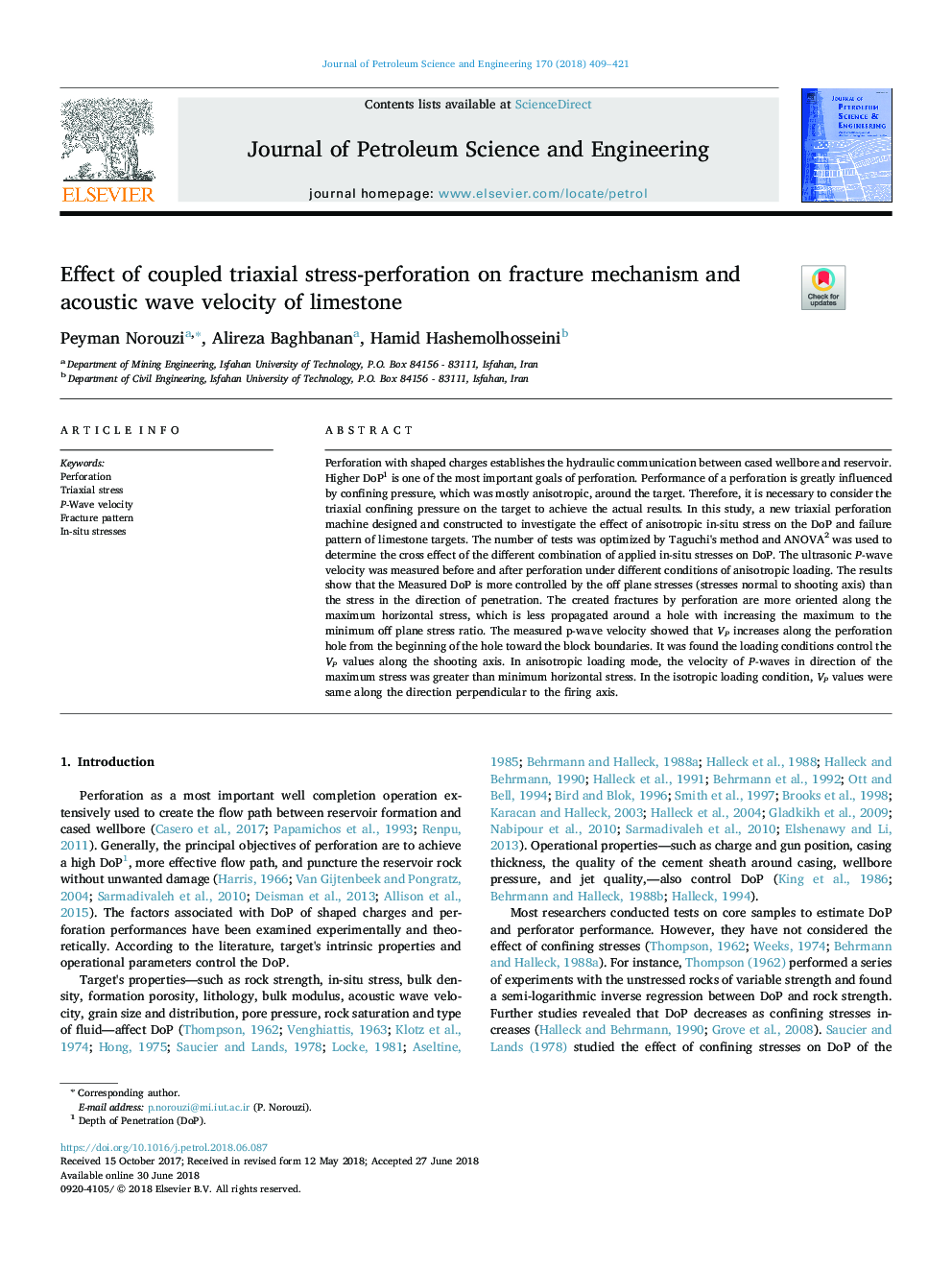| Article ID | Journal | Published Year | Pages | File Type |
|---|---|---|---|---|
| 8124459 | Journal of Petroleum Science and Engineering | 2018 | 13 Pages |
Abstract
Perforation with shaped charges establishes the hydraulic communication between cased wellbore and reservoir. Higher DoP1 is one of the most important goals of perforation. Performance of a perforation is greatly influenced by confining pressure, which was mostly anisotropic, around the target. Therefore, it is necessary to consider the triaxial confining pressure on the target to achieve the actual results. In this study, a new triaxial perforation machine designed and constructed to investigate the effect of anisotropic in-situ stress on the DoP and failure pattern of limestone targets. The number of tests was optimized by Taguchi's method and ANOVA2 was used to determine the cross effect of the different combination of applied in-situ stresses on DoP. The ultrasonic P-wave velocity was measured before and after perforation under different conditions of anisotropic loading. The results show that the Measured DoP is more controlled by the off plane stresses (stresses normal to shooting axis) than the stress in the direction of penetration. The created fractures by perforation are more oriented along the maximum horizontal stress, which is less propagated around a hole with increasing the maximum to the minimum off plane stress ratio. The measured p-wave velocity showed that VP increases along the perforation hole from the beginning of the hole toward the block boundaries. It was found the loading conditions control the VP values along the shooting axis. In anisotropic loading mode, the velocity of P-waves in direction of the maximum stress was greater than minimum horizontal stress. In the isotropic loading condition, VP values were same along the direction perpendicular to the firing axis.
Related Topics
Physical Sciences and Engineering
Earth and Planetary Sciences
Economic Geology
Authors
Peyman Norouzi, Alireza Baghbanan, Hamid Hashemolhosseini,
